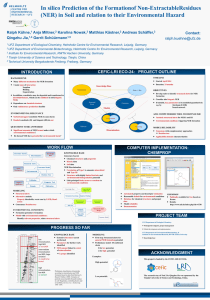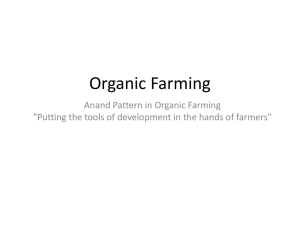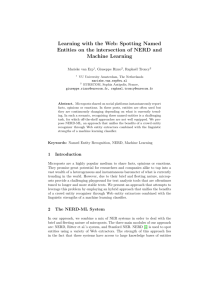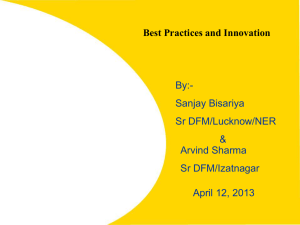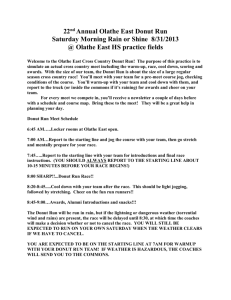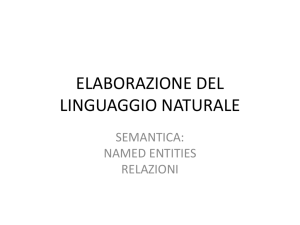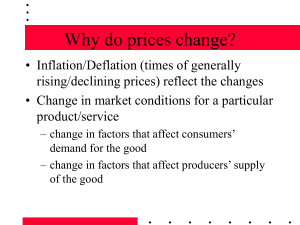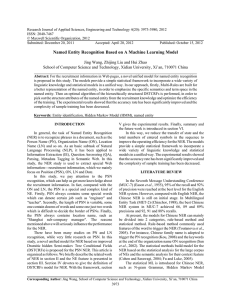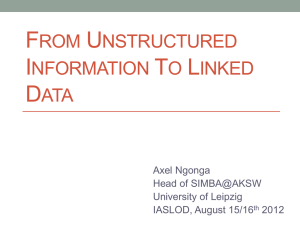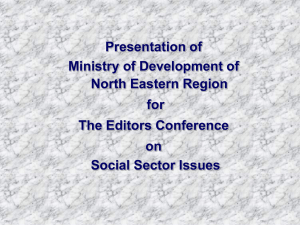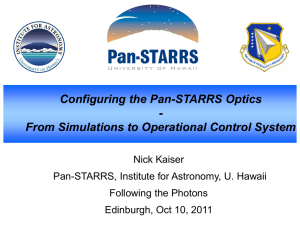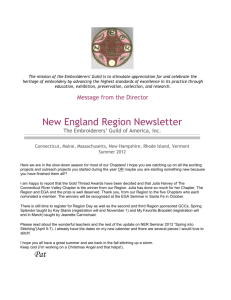Learning about the world through social media
advertisement
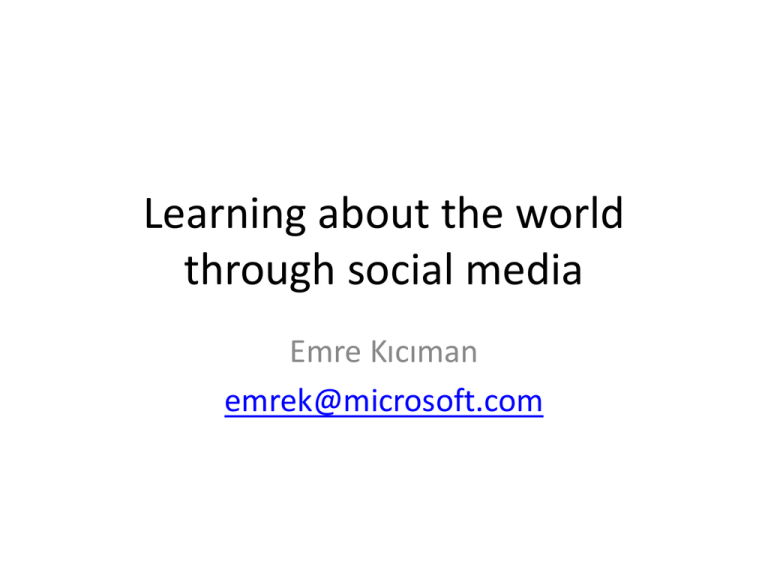
Learning about the world through social media Emre Kıcıman emrek@microsoft.com Douglas Wray - http://instagr.am/p/nm695/ @ThreeShipsMedia dunkin donuts donut shop krispy kreme coffee people doughnut shop mister donut starbucks voodoo… donut king bella cucina donut palace donut house tim hortons doughnut plant donut wheel donut… mr donut Where do people get donuts? What do people drink with donuts? What kind of donuts do people eat? About the donuts data • ~180k tweets containing “donut” or “doughnuts” from 7 days of twitter firehose (week of Feb 6) – No disambiguation • Associations are much sparser – 1000s of tweets about stores, drinks, etc Building a platform Extract people’s interactions with each other and world • 1) Building analysis functionality – I’ll talk about Flexible Named Entity Recognition • 2) What can “real-world” info be used for? – I’ll describe 2 of the apps I’ve been working on • Also: What do we need to know about how people behave, to correctly interpret social media? Societal, policy, and other external influences Social media data analysis Apps & social experiences Understanding social behavior of individuals and groups FLEXIBLE NAMED ENTITY RECOGNITION WITH N-GRAM MARKOV MODELS with Chun-Kai Wang Ming-Wei Chang Paul Hsu Flexible Named Entity Recognition • Goal: – Handle noisy text – Build recognizers for new entity classes – Without requiring labeled data • Approach: – HMM + language models for unsupervised NER – Training data from non-domain specific sources combined with seed list B-I-O model • Standard beginning-inside-outside model I am going to Krispy kreme. #hungry O O O O B I O Combining with N-gram model • Standard beginning-inside-outside model I am going to | Krispy kreme. #hungry O O O O ?? 𝑃𝐵 𝐾𝑟𝑖𝑠𝑝𝑦 𝑔𝑜𝑖𝑛𝑔 𝑡𝑜 >? 𝑃𝐹 (𝐾𝑟𝑖𝑠𝑝𝑦| <>) N-Gram Markov Model B I O NLMM • HMM + N-Gram Language model – Captures relationships between entity boundaries and words • Foreground & background language model allow unsupervised learning Building a foreground language model • Combine: – Domain-specific seed list – General-purpose relation entity • Random walk to find text similar to seed • Bias text by popularity Evaluation • Person – Organization - Place • Baselines – Stanford NER (trained on formal text) – Ritter’s NER [EMNLP’11] (trained on Twitter) • Validate on randomly selected tweets – Note: selection criteria has strong effect on results Overall Results Precision Recall F1 score Stanford NER (CoNLL) 0.35 0.43 0.39 Stanford NER (MUC) 0.54 0.35 0.43 Ritter et al. NER 0.62 0.42 0.50 NLMM (Title) 0.26 0.28 0.27 NLMM (Title + Page view) 0.52 0.46 0.49 People recognition results Precision Recall F1 score Stanford NER (CoNLL) 0.58 0.54 0.56 Stanford NER (MUC) 0.78 0.42 0.54 Ritter et al. NER 0.48 0.52 0.50 NLMM (Title) 0.22 0.51 0.31 NLMM (Title + Page view) 0.57 0.58 0.58 Location recognition results Precision Recall F1 score Stanford NER (CoNLL) 0.45 0.47 0.46 Stanford NER (MUC) 0.68 0.45 0.55 Ritter et al. NER 0.63 0.40 0.49 NLMM (Title) 0.12 0.34 0.18 NLMM (Title + Page view) 0.50 0.51 0.51 Effect of Background Corpus Size Adapting to a new class and domain • New class: recognize any food or drink in a restaurant review • Training data – Menu items crawled from web – Wikipedia food categories – Search queries that lead to Yelp.com • Evaluation – 200 labeled CitySearch & Yelp reviews Recognizing Food Precision Recall F1 score NLMM (Query + MI-100) NLMM (Wiki) NLMM (Wiki + MI-100) Lookup (MI-10) Lookup (MI-100) Lookup (MI-1000) Lookup (Wiki + MI-100) 0.41 0.58 0.58 0.00 0.27 0.25 0.10 0.26 0.48 0.64 0.02 0.27 0.07 0.37 0.32 0.53 0.61 0.01 0.27 0.11 0.16 Summary of Flexible NER • Easy to build NER for new classes and domains – Already built restaurants, games, movies, locations, … • Performs as well as state-of-the-art NER • Next steps: Adding additional context to improve recognition (class n-grams, cooccurrence models, related tweets) • Fast. QUERYING HUMAN ACTIVITIES with Michael Gamon Alex Bocharov Munmun De Choudhury Scott Counts Danyel Fisher Patrick Pantel Bo Thiesson Learning from the World’s Experiences Use social media as a fine-grained, large-scale fresh record of people's actions, motivations and emotions Our goal is to help people with their tasks and decisions by showing them what others have done in similar situations, why they did it, and how they felt afterwards. • • • • Where to go wine tasting? Where do healthy people eat out? Find a café for studying What’s funny right now? Analysis Flow • • • • 1. Who is relevant? 2. What did they do? (Everybody) Experts/Authorities Behavior-based Interests • Actions • Entities • Time 3. How did they feel about it? • Mood and sentiment associated with these actions and entities Analysis Flow • • • • 1. Who is relevant? 2. What did they do? (Everybody) Experts/Authorities Behavior-based Interests • Actions • Entities • Time 3. How did they feel about it? • Mood and sentiment associated with these actions and entities “Where do healthy people go to eat?” • Experts on health • People who exercise regularly • People who Like/Follow health-related topics Analysis Flow • • • • 1. Who is relevant? 2. What did they do? (Everybody) Experts/Authorities Behavior-based Interests • Actions • Entities • Time 3. How did they feel about it? • Mood and sentiment associated with these actions and entities “Where to go wine tasting?” What places are mentioned together with “wine tasting”? Analysis Flow • • • • 1. Who is relevant? 2. What did they do? (Everybody) Experts/Authorities Behavior-based Interests • Actions • Entities • Time 3. How did they feel about it? • Mood and sentiment “Where to go wine tasting?” What mood and sentiment words were used to describe “Napa Valley”, “Loire”, … Status • • • • 1. Who is relevant? 2. What did they do? (Everybody) Experts/Authorities Behavior-based Interests • Actions • Entities • Time 3. How did they feel about it? • Mood and sentiment Simple results in a search Some fun results NARCO-TWEETS: SOCIAL MEDIA AND ORGANIZED CRIME With Andres MonroyHernandez danah boyd Scott Counts Mexican Drug War 2006-present http://www.diegovalle.net/drug-war-map.html Social Media Usage People turning to social media for information when government and news fails We are applying “big data” analysis to better understand how people use social media; what role it plays; and how it can be improved 1. Participation patterns 2. Aggregators/curators 3. Effects of regulation and intimidation Data study from Aug 2010 and Nov 2011 Platform-Building • Learning to add structure to noisy social media – Flexible named entity recognition – Relationships between activities and locations – Location inference • 2 driving applications – Querying Human Activities – Social media analysis in context of ongoing crisis Conclusions • Social media tells us how about how people interact with the world and each other • Building a platform to extract this knowledge • Technical challenges in understanding noisy, unstructured text – Entity recognition, location, relationships • At the same time, learning about app scenarios through two projects at different scales Extra slides What is Tweetable? • Not all events are tweeted at the same rate? – “I am drinking water” – Intuition: how interesting is it? • Can we quantify this intuition? – Is it “change”? Expectation? Extremeness? – Or sentiment, privacy, or something else? “OMG, I have to Tweet that! A Study of Factors that Influence Tweet Rates” to be in ICWSM-12. Experiment • 12 months of weather-related tweets – Trained classifier, 0.83 F-Score (0.8 prec, 0 • Infer location of users • Graph daily rate of tweets for 50+ major cities • Compare to underlying features of groundtruth weather – Extremeness – Expectation – Change Zoom in on data… 60 Thunderstorm, 9/30 Hot day, 9/27 50 1000 40 100 30 20 10 Weather-Related Tweet Rate 10 Temperature 1 40422 0 40436 40450 40464 Daily Max Temperature (C) Daily Tweet Count 10000
